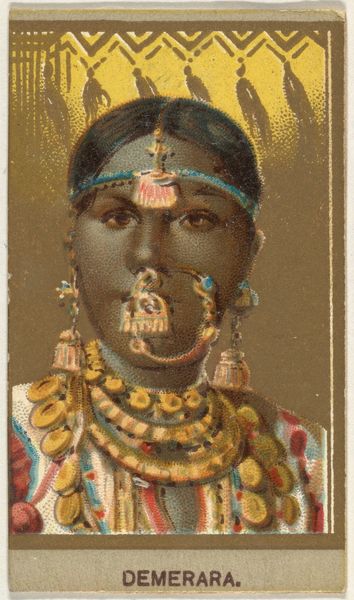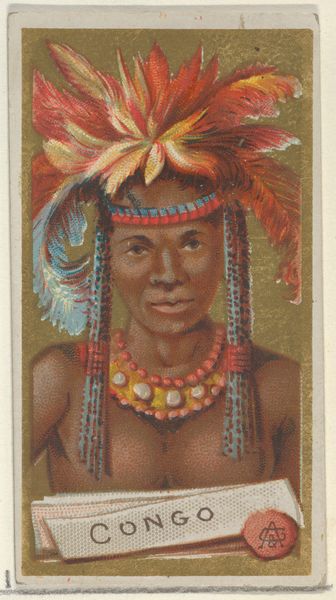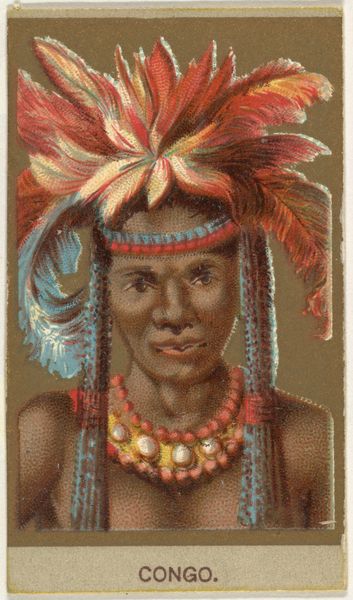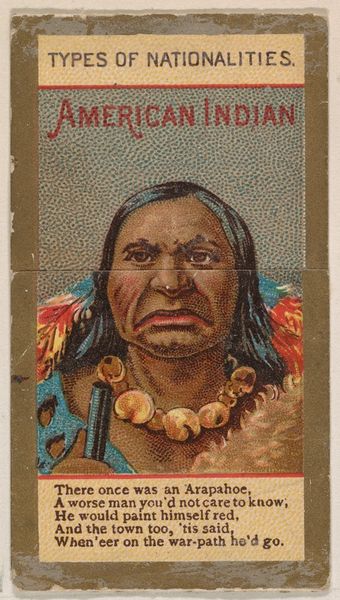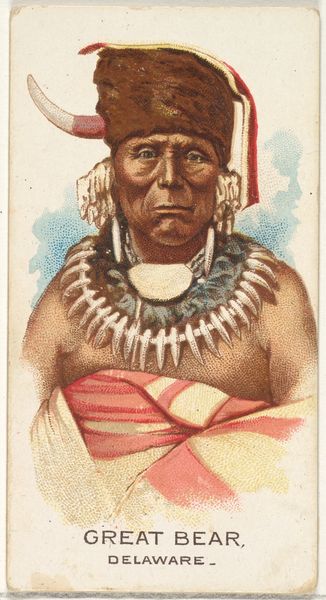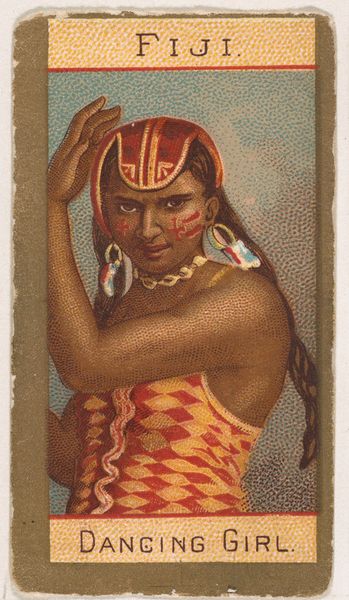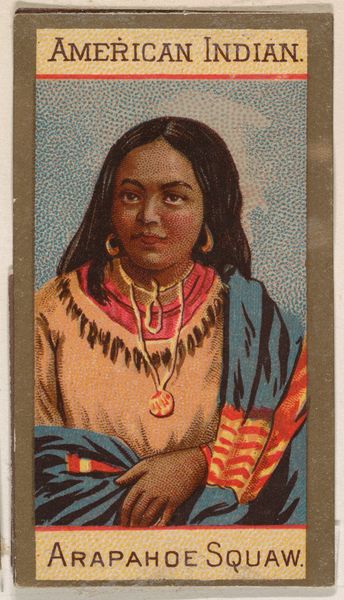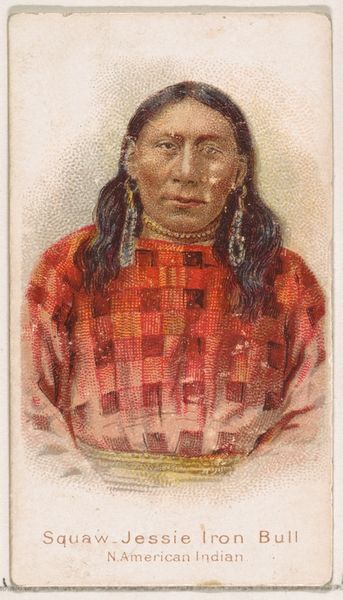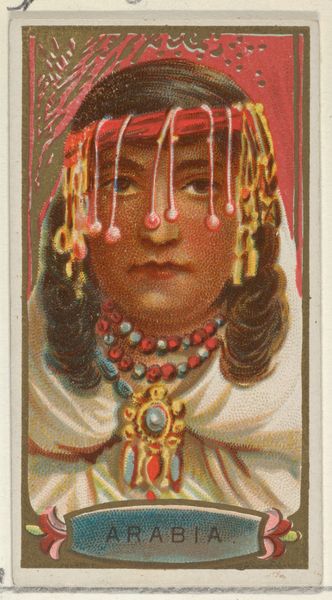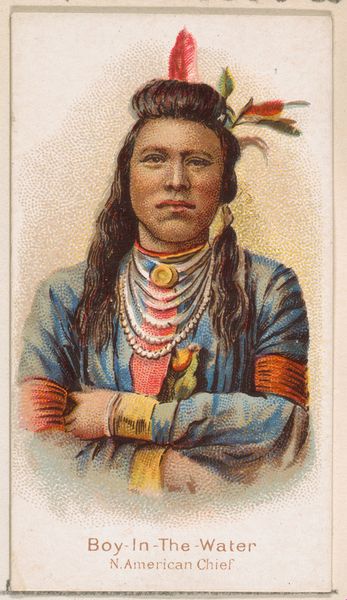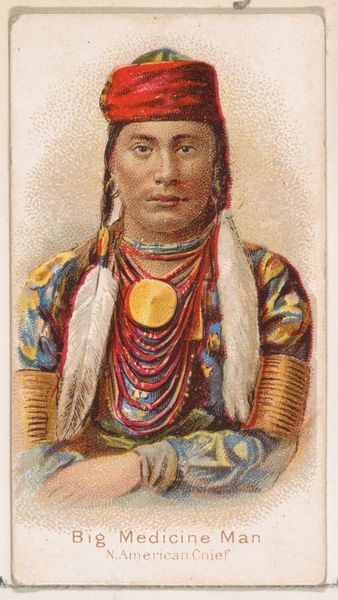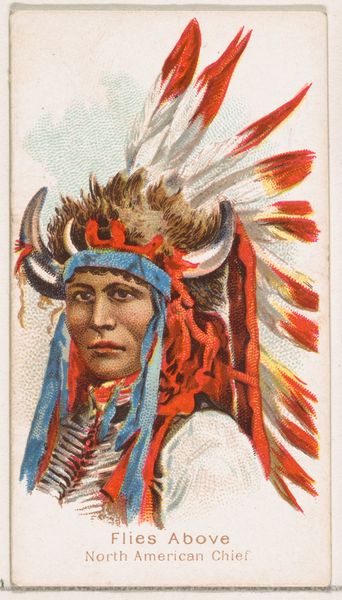
Demerara, from the Types of All Nations series (N24) for Allen & Ginter Cigarettes 1889
0:00
0:00
drawing, coloured-pencil, print
#
portrait
#
drawing
#
coloured-pencil
# print
#
coloured pencil
#
orientalism
#
genre-painting
#
portrait art
Dimensions: Sheet: 2 3/4 x 1 1/2 in. (7 x 3.8 cm)
Copyright: Public Domain
Editor: This vibrant card, "Demerara," created in 1889 by Allen & Ginter as part of their "Types of All Nations" series, immediately strikes me with its intricate detail, especially considering its small size. It appears to be a colored pencil drawing, perhaps reproduced as a print. What's your take on this piece? Curator: The use of colored pencil and its reproduction as a commercial print are key. Allen & Ginter, a tobacco company, distributed these cards. So, let's think about the material context. We have a portrait, presented as exotic, packaged with cigarettes, an emerging consumer product tied to global trade. How does this object participate in the construction of ideas about labor and other cultures for the consumer? Editor: I see your point. The image exoticizes a woman, possibly from the Demerara region in Guyana, but it was mass-produced as a collectible inserted into cigarette packs. Curator: Exactly. Consider the labor involved. There were artists who likely mass-produced these images. Allen & Ginter benefitted from not just their labor but also the tobacco farm workers, and the image also commodifies a person and a place, "Demerara," turning it into something consumable. It perpetuates colonial ideas and exotification within the structure of commodity culture. How might our understanding shift if we viewed this image not as "high art" but as a mass produced trade commodity that further solidified particular class relations, global capitalism, and ideologies? Editor: It is fascinating how analyzing the materials and means of production reframes our understanding of this portrait. It becomes more about how cultural perceptions were manufactured and consumed at the time. Curator: Precisely. It is not merely an image, but evidence of material practices, ideologies, and labor relations embedded in everyday consumption. It makes us consider our present day through our material culture as well.
Comments
No comments
Be the first to comment and join the conversation on the ultimate creative platform.
